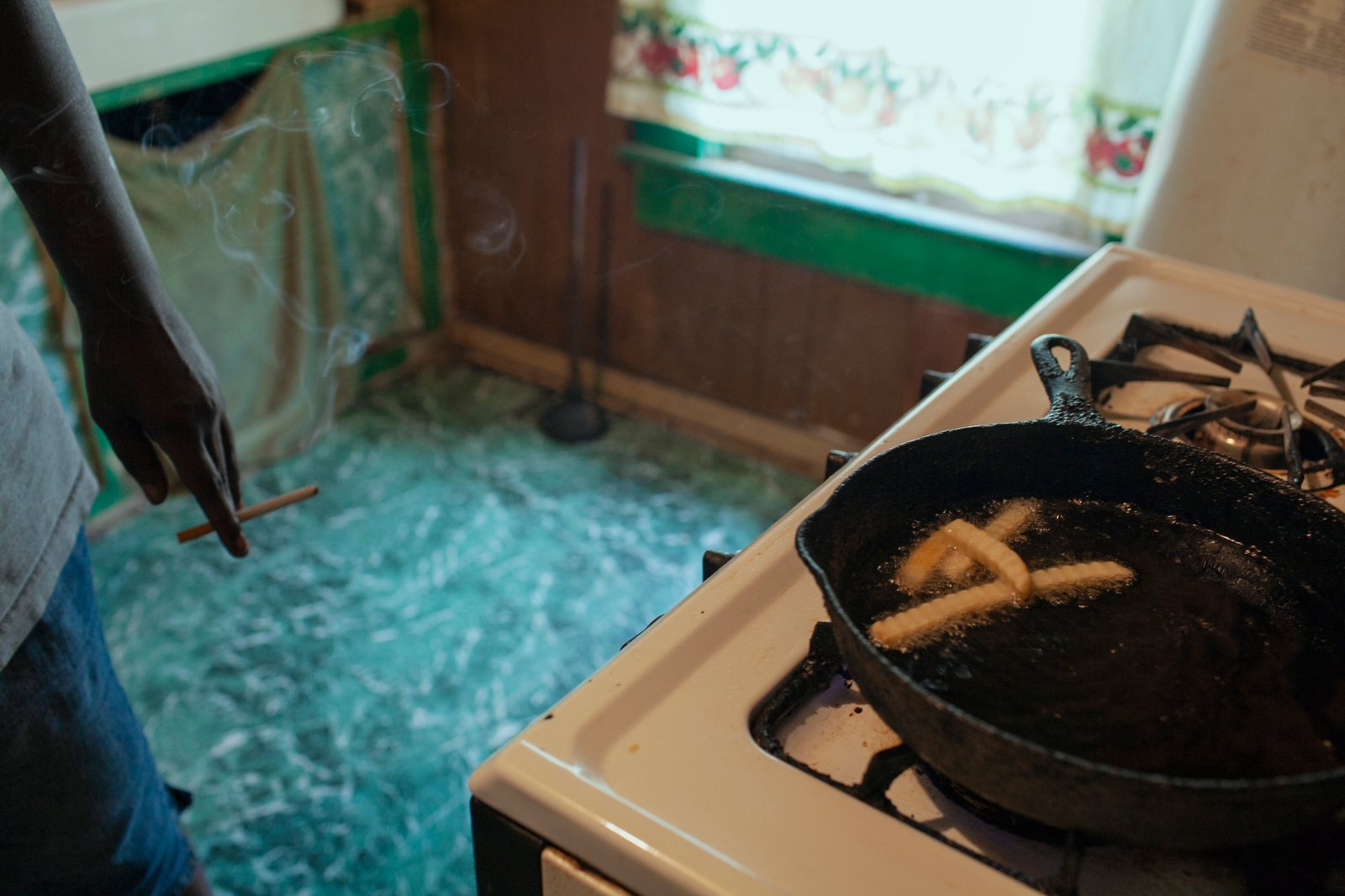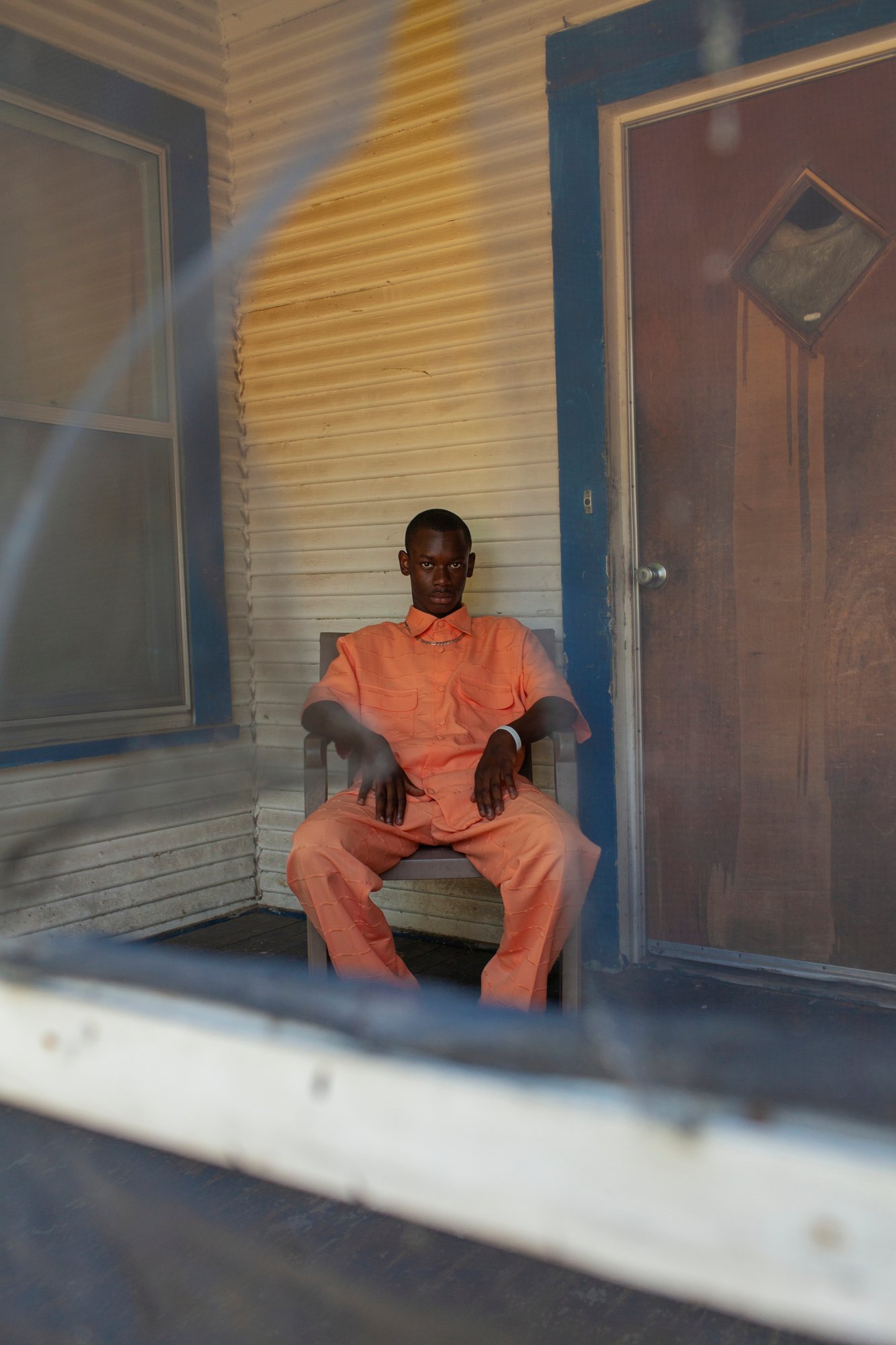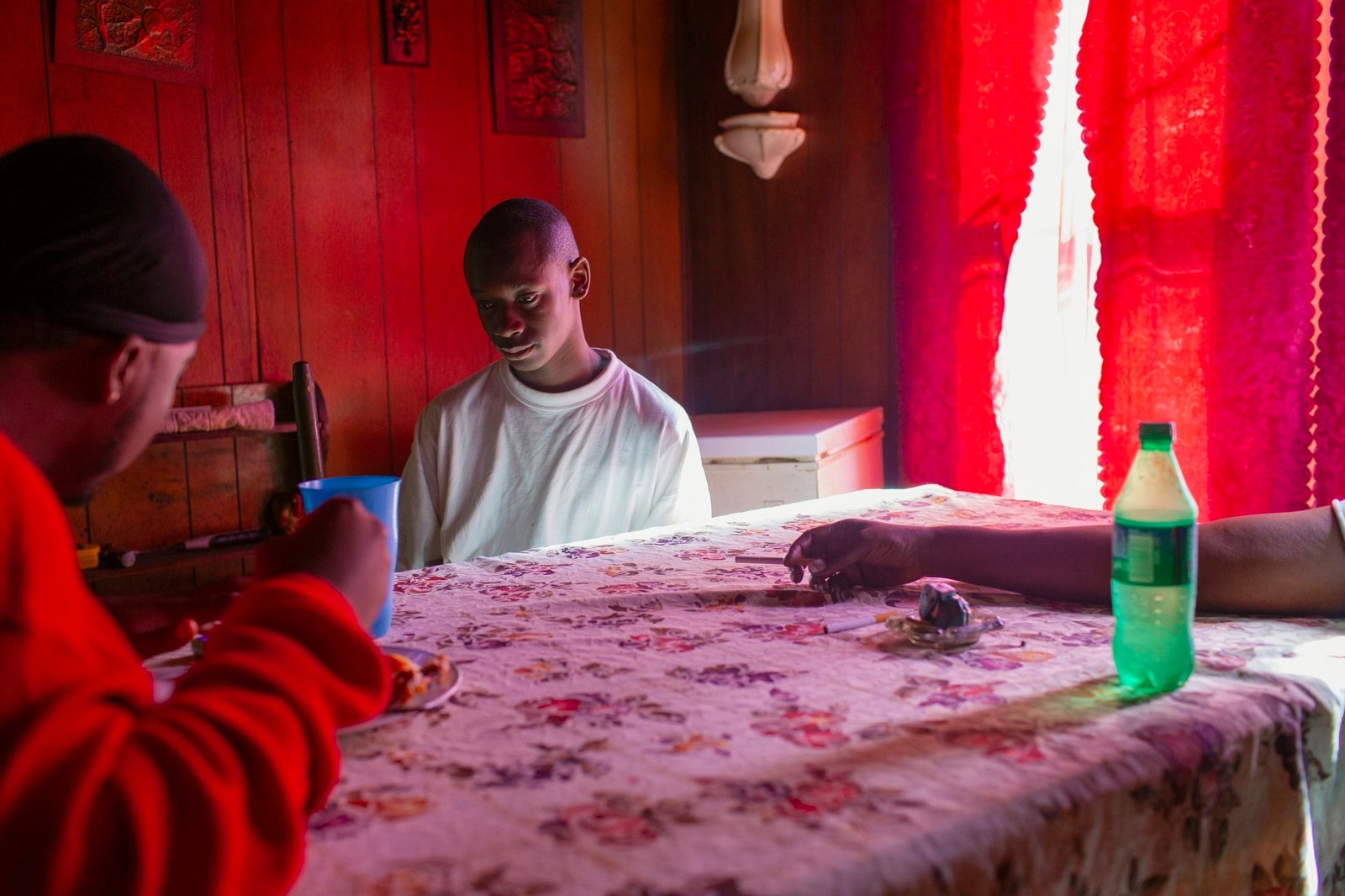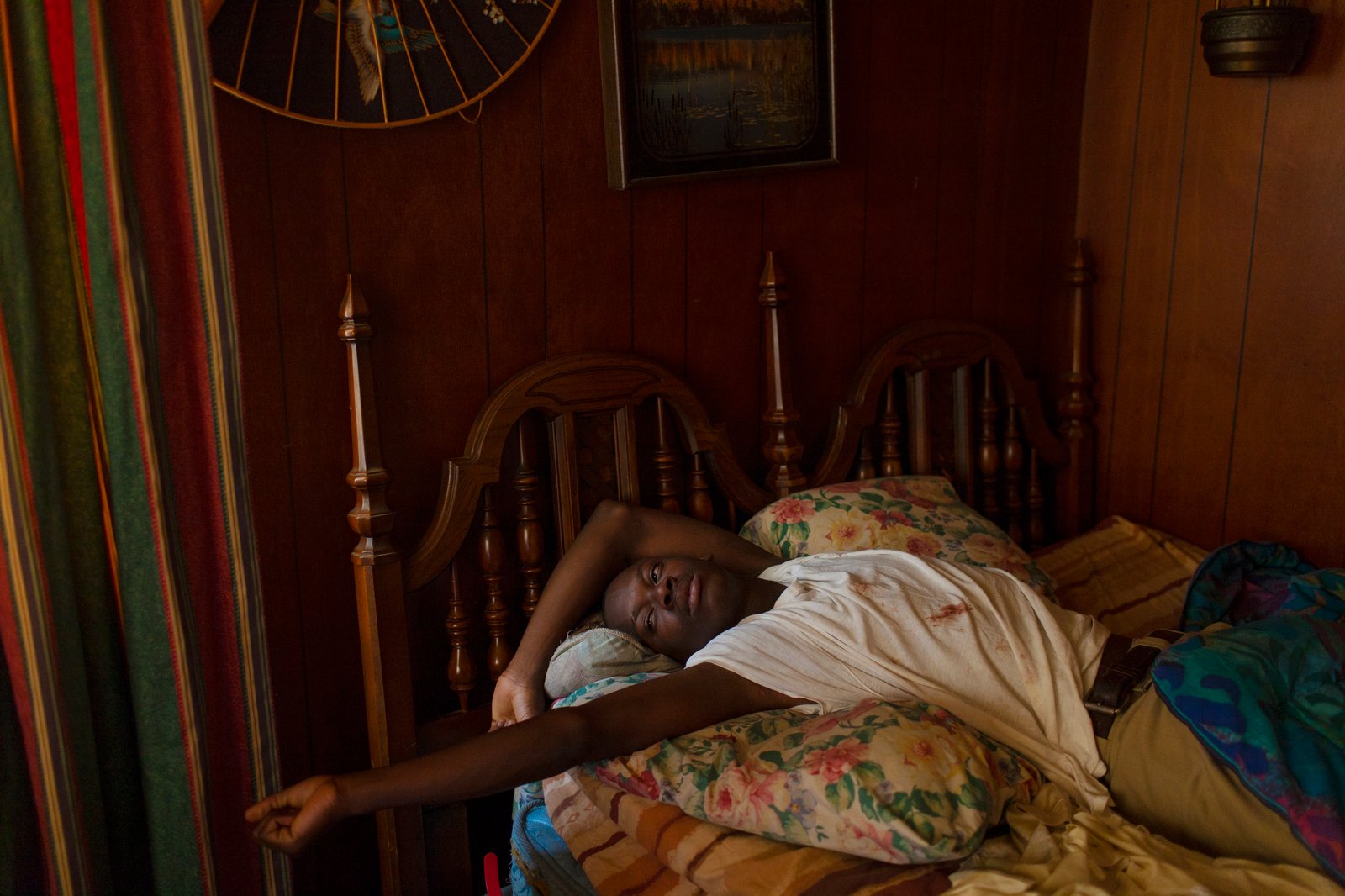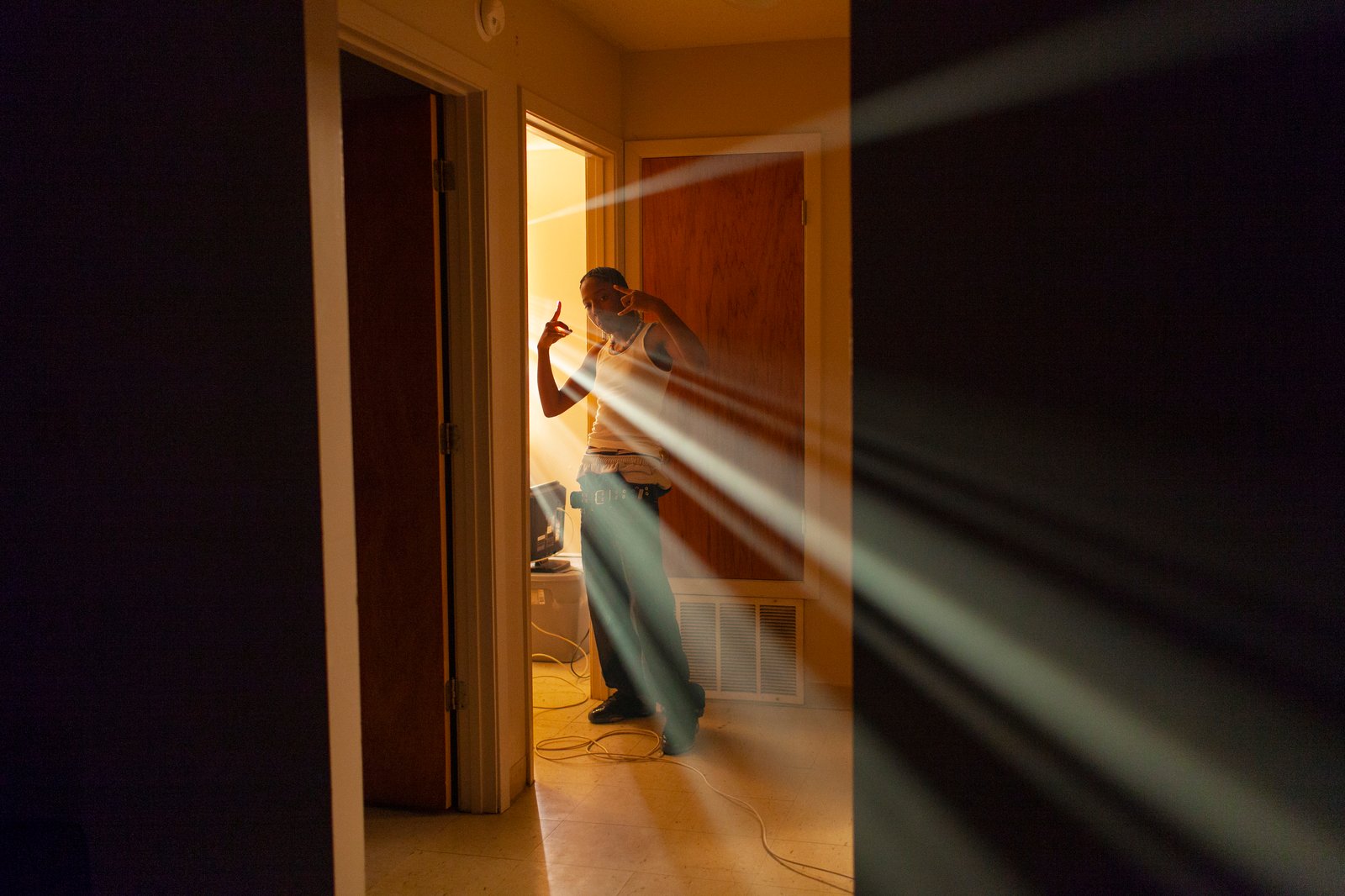Baptist Town is a neighbourhood in the Mississippi Delta town of Greenwood, surrounded on all sides by train tracks. In a community of only around five hundred people there is roughly a ninety percent unemployment rate. Many scenes from The Help were shot there, because not much has changed since the 1960s in regards to the architecture and the socioeconomic landscape. It’s as close as it gets to a community which has been completely passed by. It’s a feeling that seems to be synonymous to an extent with the feeling of many parts of America, even if it isn’t quite so explicit as in Baptist Town. Sin & Salvation is the documentation of that space, as a part of the series The Invisible Yoke.
Sin & Salvation is a standalone body of work within The Invisible Yoke series in that it forced Matt, a photographer who prefers the immediate and accessible, to spend seven years returning to the area to photograph. Beginning as a commission, this lead to him going back repeatedly, eventually spending around 120 days of working there over the years. It’s always a difficult task, working away from home, especially for personal projects. In a way, it almost comes through with the images – there’s an intensity and strength to the series which is rarely matched, and it has all the charm and charisma of well-done street photography within the setting of a larger documentary project.
There are a lot of candid images with jaunty angles made in the moment, and Sin & Salvation is always energetic. It never shies away from the realities of the area, which is blighted by drugs and violence, though is very much a series described by the hope and aspiration instead of the darkness. It is defined by its togetherness, and in many ways, the acknowledgement that no help will come from the outside. It’s a work defined by Matt recognising that he is very much an outsider within the space – he says that he ‘feels more at home in small communities’ and that in Baptist Town they were very ‘warm, open, loving and accepting’ which seems to stand at odds with projects like The Seven Cities, where he is the insider, and incorporated the idea of that into the work. Throughout working in the Baptist Town neighbourhood, he wanted to ‘collapse the distance between the outsider and the insider’.
Vibrancy and reaction seem to be a pivotal feature in the images. As essentially a landscape photographer I envy the way in which photographers like Matt can go into a community and integrate, finding that balance between the voyeur and being part of the community. This ability to be non-invasive in his image-making is something which comes across incredibly strongly in this series and there seems to be a natural approach to people, and making portraits which reflect this. Whereas in I Love you, I’m Leaving film and bulky cameras slowed to process for the best results, Sin & Salvation, like most of his commissioned work, was made utilizing a range of digital cameras, for their obvious speed benefits, but also being able to work more quietly and cost effectively. The choice is led by a balance between wanting to be able to intuitively use the equipment, whilst at the same time not wanting to always know exactly what the image will look like.
The rest of The Invisible Yoke arguably feels a little colder than Sin & Salvation, and this may just be because it is based around a larger area and the intensity of photographing such a small community comes through in the images. Arguably, it could be something more than that though. It’s someone taking a genuine interest in a community which is a little left behind, and Matt seems like someone who finds it easy to make connections, and always allows people their own space. Key to this is understanding that you are the observer, and life should continue with a natural pace around you. For a change, it might be someone who although they do have an agenda, doesn’t directly profit from their interest in the place. It’s important to be conscientious of this when photographing, as using people outright to make is neither ethical, nor does it make for good photography. Doing documentary well is born of an understanding that it is a collaboration, and the power relationship should follow suit. When it comes to that different feeling between Sin & Salvation and the rest of The Invisible Yoke I would argue that class comes quite heavily into it – though few of the people photographed in the four chapters are upper or middle class there seems to be a direct difference between how the lower working class people in Baptist Town interact with Matt, and how the upper working/lower middle class ‘ordinary’ American demographic behaves. Those that seem to be around cameras more, seem much more wary of them. They don’t embrace the attention and they seem to not really want to engage with the photographer.
It could, of course, be that I’m simply reading it wrong. In part, Matt changed the way he was working – in Mississippi he was heavily focused on the individual and the smaller details of communities; later on in Virginia much of the project comes from less intimate public events (and seems to lean towards a more classical street photography approach). As the work effectively slowly zooms out from this one microcosm of society it begins to create a patchwork idea of what ordinary America is, at least as reflected vaguely in Matt’s eyes. As his practice evolves, so does the scope for how ambitious the projects are, and how they are put together.
Surprisingly, approaching people is still the thing which he finds the most difficult. ‘Over time I have sort of developed a thicker skin for rejection, but it’s still terrifying’, and it’s completely vital in these projects to be able to find someone who will act as an access point – ‘a gatekeeper’ and guide the interactions at the beginning. The key to making this work then, is relationships. So much hangs in the balance in projects like Sin & Salvation in making these relationships and becoming a part of the community, being given access as well as being able to interact well with those that you’re photographing. It’s probably most important to remember to be a photographer second, and a human first, with the camera as always a part of the interaction. Always be looking, listening, and trying to learn. The images will fall into place.
